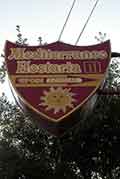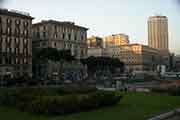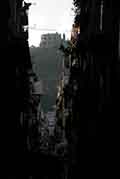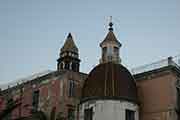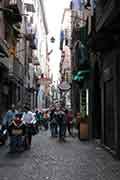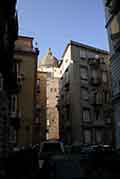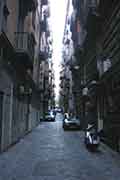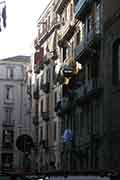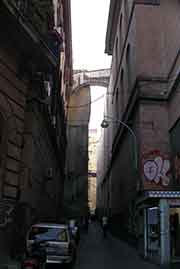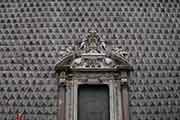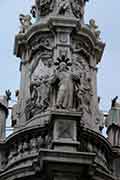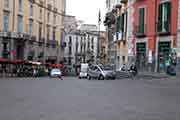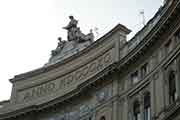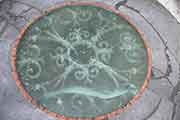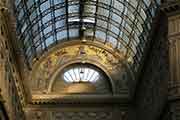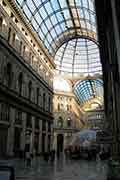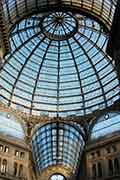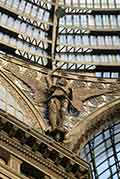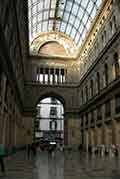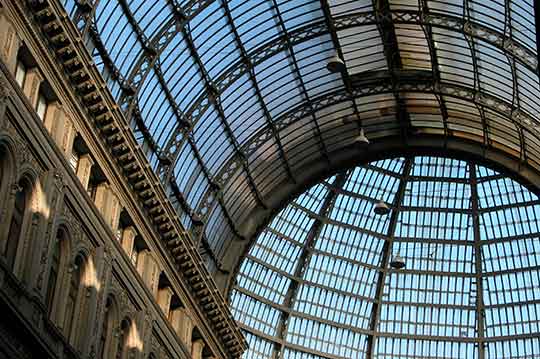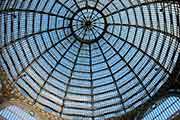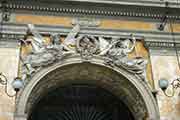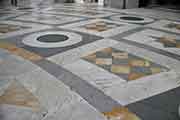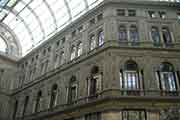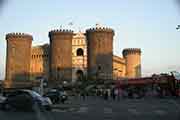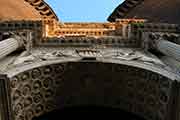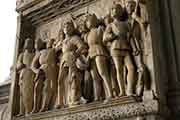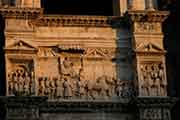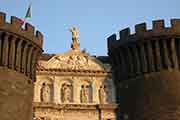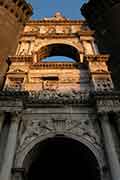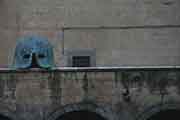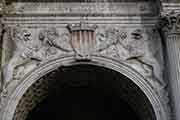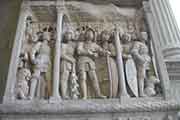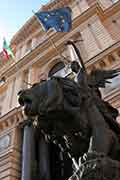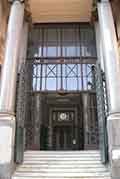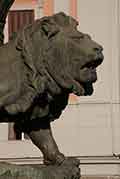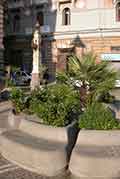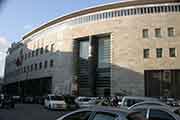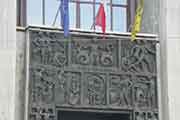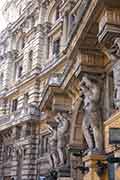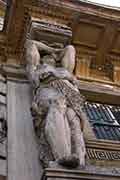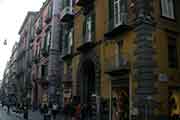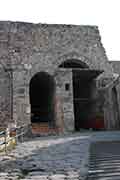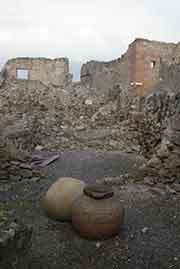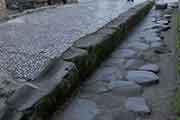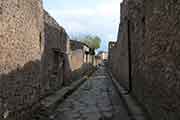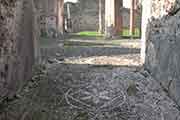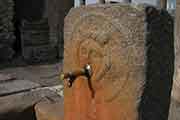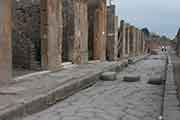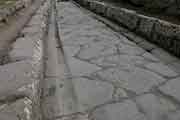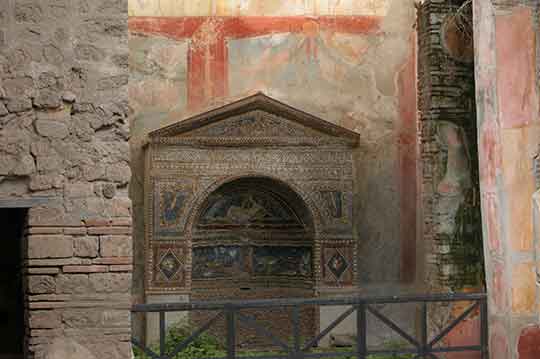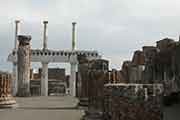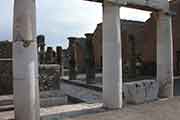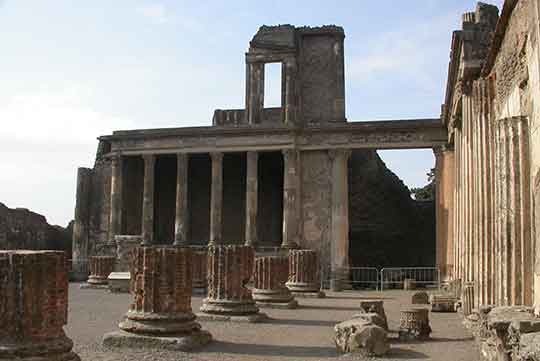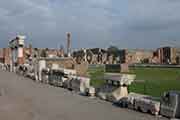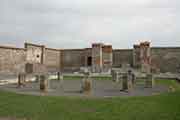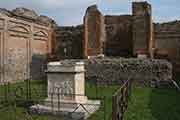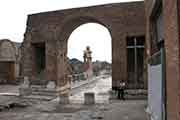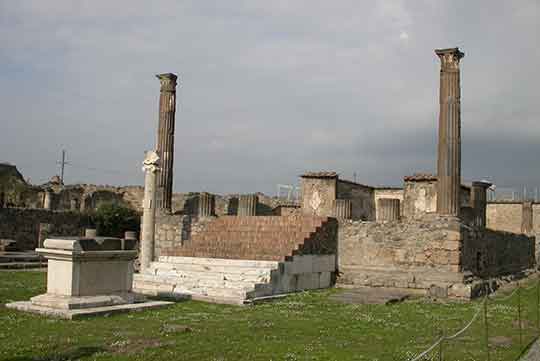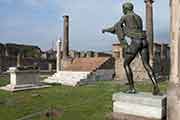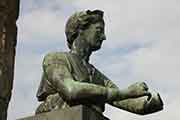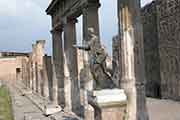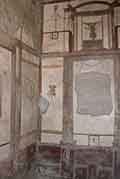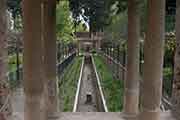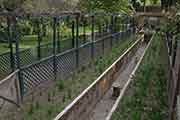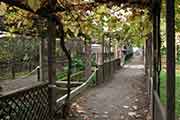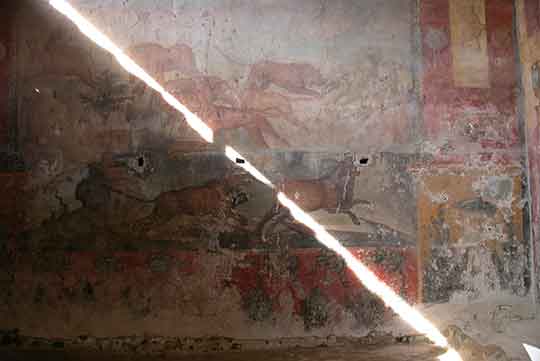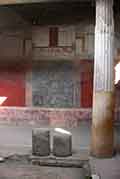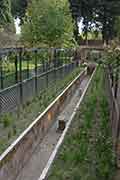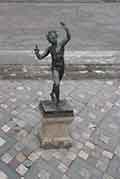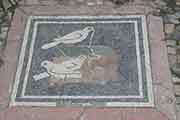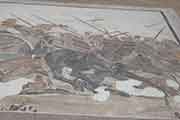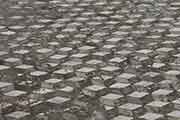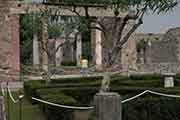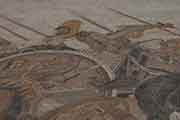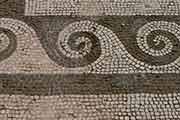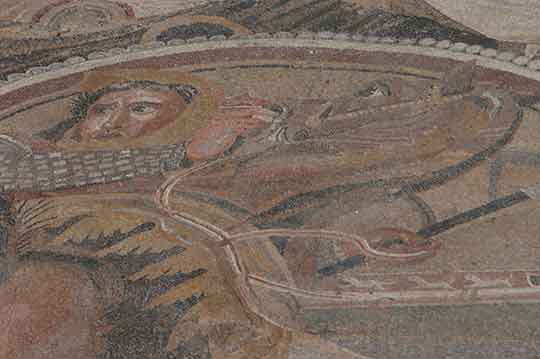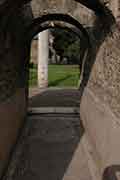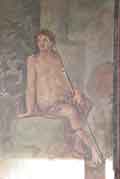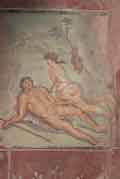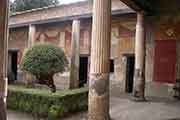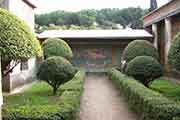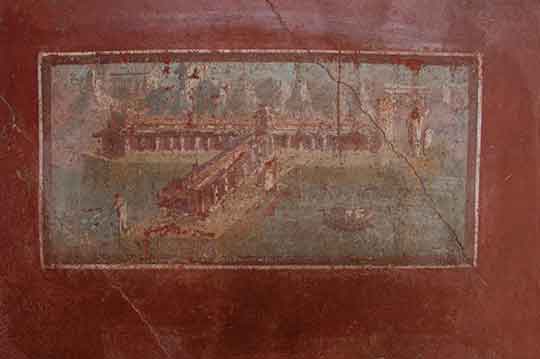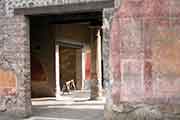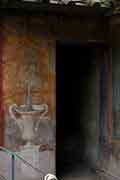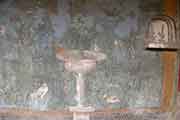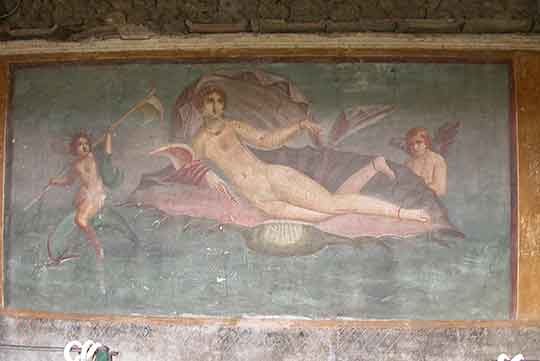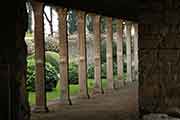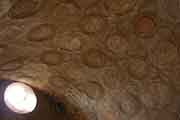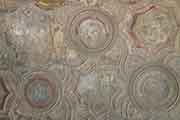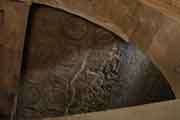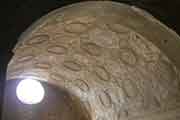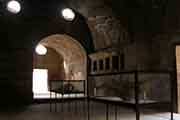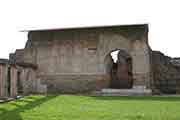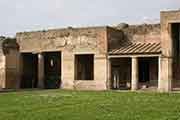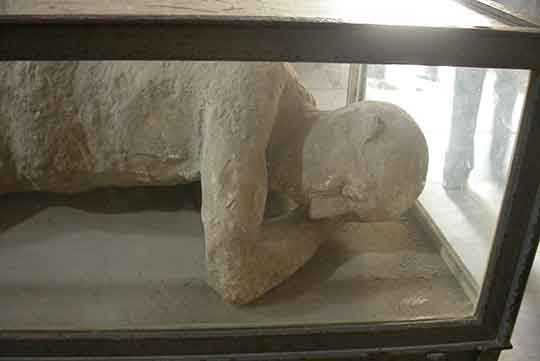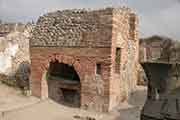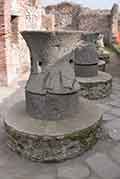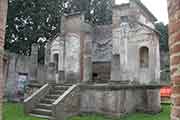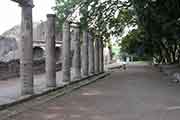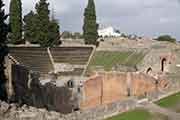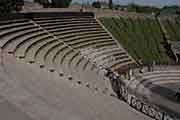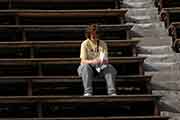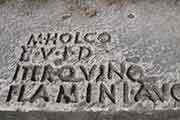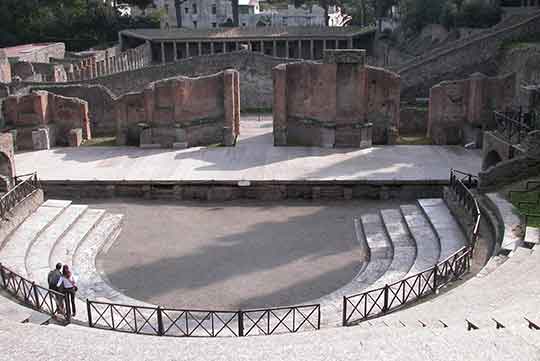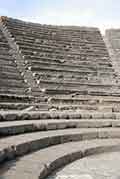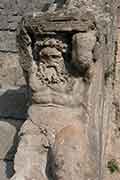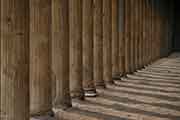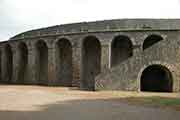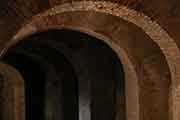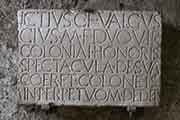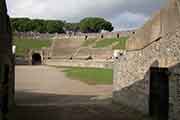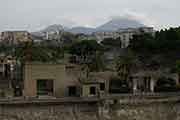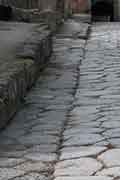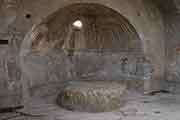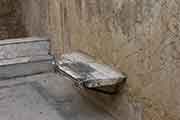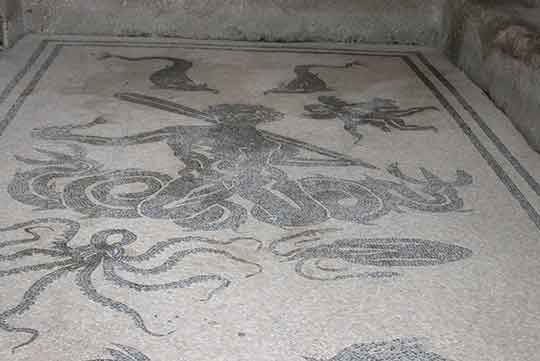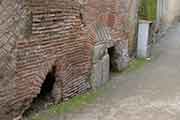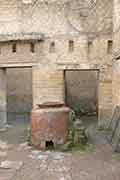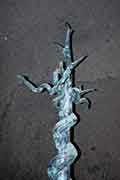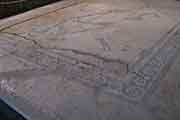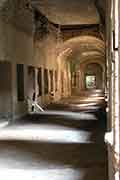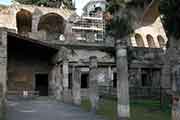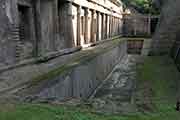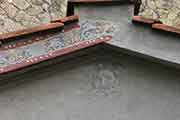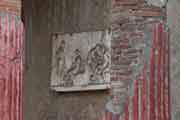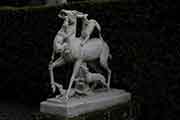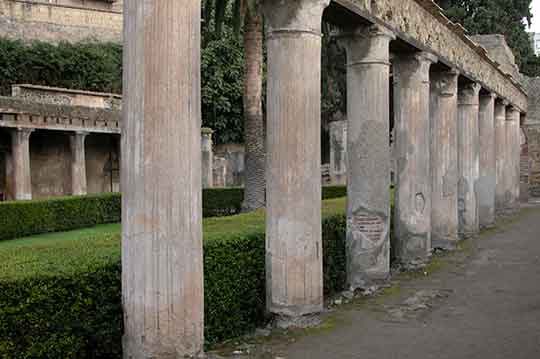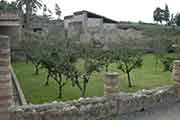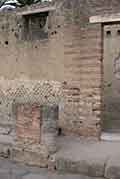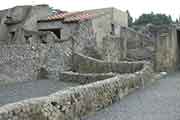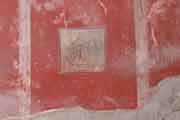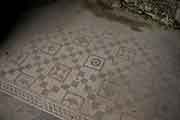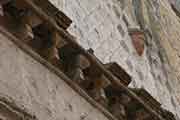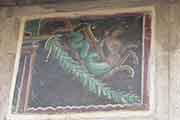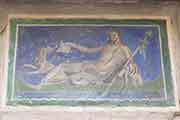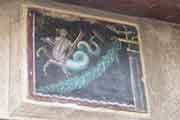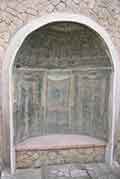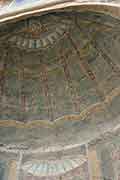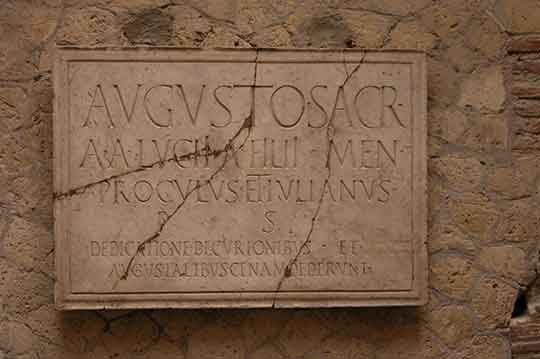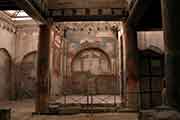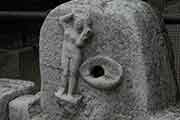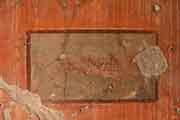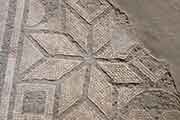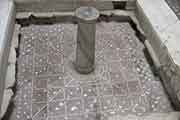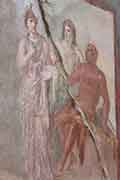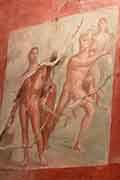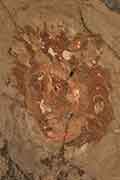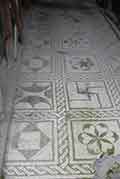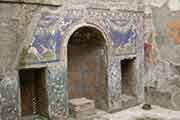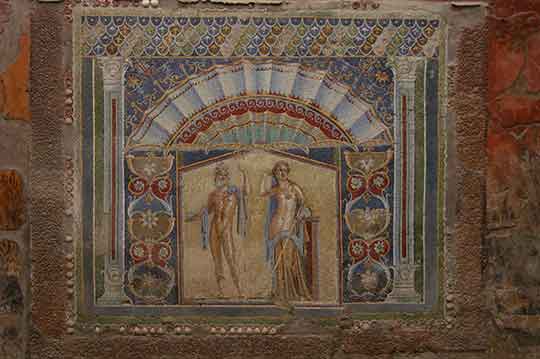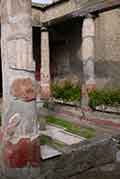Naples
|
November 2005 found us in Naples for a weekend. Our main purpose of visiting Naples was to explore Pompeii and Herculaneum - we weren't disappointed. We spent the first afternoon and part of the last afternon in Naples itself with Saturday in Pompeii and Sunday in Herculaneum. |
So ... Naples. What a place. More mopeds than I've ever seen before and, overall, a pretty dirty place with loads of litter etc. Very busy but quite a nice atmosphere and very friendly people. |
We checked in a went to a recommended restaurant. We speak hardly any Italian and the family running the restaurant spoke even less English but the food was lovely and we got there with lots of arm waving, pointing etc. |
|
Off we went with guide book in tow and a vague idea of where we were heading |
|
|
| |
|
|
|
|
|
|
One of the main places we visitted was the Galleria Umberto - a wonderful glass structure (with a couple of good ice cream places to boot). It was built in 1890, has a marble floor and glass ceiling. We didn't get to see the zodiac design on the floor because there was a marketing tent in the middle (not sure what they were advertising).
|
|
|
|
|
|
|
|
|
|
Not far from there we found the Castel Nuovo aka the Maschio Angioino (the keep of the Angevin kings). The relief on the Arco di Trionfo celebrates Alfonso of Aragon's entry into the city. |
|
|
|
|
|
|
|
|
|
There were plenty of other impressive buildings around, very often around piazzas (but not always) and plenty of shops, particularly on the Via Toledo. |
|
|
|
|
|
|
|
|
|
| |
The train ride from Naples to Pompeii was very easy, regular and not too long. There was a lot of graffiti in the stations (and on the trains ... and most other places too) - some of it was pretty good. |
|
We spent a whole day in Pompeii. We took ourselves around with a map and a guide book and had a great time. The first thing that struck us was the size of the place - we had no idea it was so large. We went in via the Porta Marina - there are two "doors" - one for the carriages and one for the pedestrians.
|
|
|
|
A few general pictures first then on to named places we visited.... |
|
|
|
|
The big stones in the middle of the road on the left are for pedestrians when the road is wet - the gaps are just the right width for the carriage wheels. The ruts on the right are made by carriage wheels - transport problems even in those days! |
|
| |
The basilica is not far from the entrance. In modern day terms this would be "the City" - the centre of all the financial activities for the area. It was also the centre of civil and commercial litigation. |
|
|
| |
|
The forum (left) is an open grassy area with lots of buildings around the outside, including a Market (macellum), the Temple of Vespasiano and Tiberius's Triumphal Arch to name a few. This was the centre of public life. |
|
|
|
Again not far and we came across the Temple of Apollo. This dates back to around the second century BC |
| |
|
|
|
We found the houses really interesting. There were quite a lot that had been excavated and you could see the rooms, wall colours, gardens etc and imagine how people lived there. |
|
The house on the left is the Casa de Cacchia Antica. The one on the next row is the Casa dei Ceii- as you can see this house had a lovely garden and some impressive wall art. |
|
|
|
|
|
The next house is the Casa del Fauno - the picture on the right is the Fawn himself! There were some wonderful mosaics in this house - mainly on the floor - and another nice garden. The big mosaic on the floor is of Alexander's Battle. |
|
|
|
|
|
|
|
|
| |
|
Moving swiftly on (not that we did!), we come to the Casa di Loreio Tibertino where there were some lovely pictures .... |
|
|
|
... and onto Casa della Venere in Conchiglia (the House of Venus in the Shel)l. Again there were some lovely paintings, most of them at the end of the garden with the main one giving the house its name.
|
|
|
|
|
|
|
|
|
Jonathon had spotted Julia Felix's villa (left) in the guide book so, whilst it wasn't on the 4 hour tour we chose to follow, it was something he wanted to find - you know how he likes his columns and colonnades.
The 4 hour tour took us almost 6 because there was so much to see.
|
One of the main social areas in Roman times was the baths and Pompeii was no exception. As you can see, these (Terme Stabiane) were ornately decorated. The final picture on the baths section shows a body in a case - this body was one of two in this display and one of quite a few excavated from the ruins. |
|
|
|
|
|
|
|
|
|
The brothel area was closed off as work was being done so we strolled on to Theatreland, past a lot of shops, wine bars etc. One that particularly caught our eye was the bakery - this is where they ground the flour and made the bread but not where it was sold. There were 39 bakeries in Pompeii at one time apparently. |
|
|
First stop in the theatre quarter was to admire the Temple of Isides, the Triangular Forum and the Quadriportico die Teatri outside the two theatres. It is a very large model of a foot in the middle of the quad. |
|
|
|
|
|
First we visited the Teatro Grande - it would seat several thousand and lived up to its name! |
|
|
|
I'm not sure whether the writing on the left is grafitti from Roman times or whether it's a seat reservation. |
| |
From there we moved over to the teatro piccolo (small theatre also known as the odeon) - still pretty big despite its name. The Pompeians must have been a hardy lot because the seats don't look at all comfortable. |
|
|
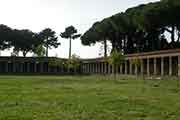
|
Finally to the palestra grande (the large gymnasium where the gladiators trained) and the amphitheatre. |
|
|
|
|
|
So ... that was Pompeii. What a fascinating place - well worth a visit but make sure you've got comfortable shoes on and plenty of time.
Sunday found us in Herculaneum. A very different place. Much more up market - a bit like Harrogate to Pompeii's Leeds when I lived up North 20 odd years ago. The posh/rich people lived in Herculaneum and it was a much smaller town.
When Vesuvius erupted, Pompeii was covered in lava whereas Herculaneum was covered in ash (about 30 metres apparently) and therefore better preserved.
|
|
On the way in, over the viaduct, you get a good view of Vesuvius in the background and a good overview of what you can see when you get there (you walk over the top of the site in a way). |
|
Herculaneum (Ercolano) was founded by the Greeks and taken over by the Romans. The Greek roads weren't wide enough for the Roman chariots and therefore had to be widened. You can see a good example of this on the right. |
|
Jonathon was busy taking photos soon after we'd entered and was approached by Pascale, a local man wearing an official badge. He showed JC a lovely mosaic then attached himself to us for the rest of our visit. It was great fun - he spoke no English so my Italian was well and truly tested but I think we got most of the stories! |
|
We spent quite a lot of time in the baths. There were male and female baths here. The female ones had higher doors, bigger seats etc. as the women tended to be bigger than the men (good breeding stock). The rich and famous came here to breathe in the sulphur for good health. |
|
First step was the warm bath (but only after you'd washed your feet) then a cold dip, aromatherapy oils and massage - sounds like bliss and the best part is the women missed out the cold dip part! The mosaic floor was spectacular with Neptune in the middle, surrounded by sealife. |
| |
|
The picture on the left is the outside of the boiler - jolly hard work - the servants/slaves lived on site. |
We saw a laundrette (below left) and various shops. The wine bars for the posh folk had higher bars than those for the commoners and wine for women (only to be drunk at home) was extremely expensive but it apparently had no detrimental affect on pregnant women. |
|
|
As with Pompeii there were bakeries, material shops etc. - very much up market compared to Pompeii. |
|
There was a swimming complex within the Great Gymnasium where we saw a bronze fountain of a Five Headed Hydra and another lovely mosaic floor. |
|
Just outside there was the school ... |
|
|
... with a learner pool. Parents could watch their children play on the grass from the viewing balcony (above right). |
|
There were some lovely houses in Herculaneum and one that was enormous. It originally overlooked the sea but the mountain of ash that fell on the city created a large hill between the town and the sea. It's still pretty spectacular. There's a walkway inside in case it's too cold to go out to exercise and inner and outer bedrooms to use depending on the temperature. There was even a bath in the house. |
|
|
|
The statue on the right was one of a few in the patio garden. The house is known as the deer house - whether or not because of the deer statues I'm not sure. The hedges in the garden are aromatic and the leaves would have been used as perfume for bathing, deodorant etc.
The Casa di Aristide (below) and the Casa d'Argo (2 rows down) are two of the first houses you come across - a good appetiser of the treats to come.
|
| |
|
|
|
The following pictures show the wide range of art work, mosaics etc that can be seen around Herculaneum - they were simply amazing. |
|
|
|
|
|
|
|
|
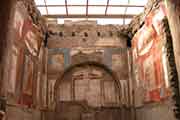
|
|
|
|
The pictures above and to the left are of the College of the Augustals. |
|
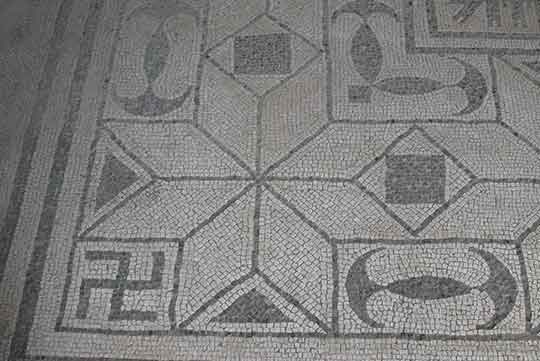
|
There were a lot of swastikas built into the mosaic floors and some of the floor patterns were more intricate than others, some more colourful. |
|
|
|
|
|
|
|
The photo on the left is the Casa dell'Atrio a Mosaico (house of the mosaic atrium) but we've saved the best til last - the Casa di Nettuno e Anfitrite (house of Neptune and Amphitrite) where the most stunning mosaics can be found. |
|
| |
|
That's it and time to fly back to London etc. We enjoyed our visits to Pompeii and Herculaneum but probably wouldn't hurry back to Naples - perhaps we'll stay in Sorrento next time instead! |
| |
|
|
